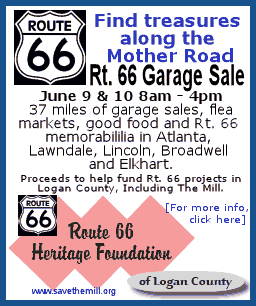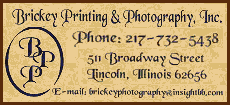|
The 500th Mesker building has been identified in Illinois. Officials
from the Illinois Historic Preservation Agency joined city leaders
and the building owners in the Washington County community of
Okawville on May 25 to officially recognize the Old Exchange
National Bank as No. 500 on the state's growing list of buildings
with ornamental sheet metal and cast iron facades produced by the
Mesker brothers around the turn of the 20th century. "When we
asked the public to help us identify Mesker buildings in their
communities, we had no idea that just two years later we would be
standing in front of number 500," said Robert Coomer, Illinois
Historic Preservation Agency director. "The response has been
phenomenal, and as a result we have been able to vastly increase the
knowledge of our common heritage."
The Okawville bank was built in 1910 by Fred Moehle as the
Exchange Bank of Merrick, Moehle & Co., which in 1920 was converted
to the Old Exchange National Bank of Okawville. It operated as a
bank until 1961, when the bank moved to a new building. The historic
structure became the law office of Walter E. Moehle, Fred's
grandson, until the late 1990s, and it was deeded to the village of
Okawville in 2003. The village hopes to rehabilitate the building
and use it as a museum and visitor center.

"The Moehle family has always been interested in all aspects of
life in the village of Okawville, and it is gratifying that a
building built by my great-grandfather continues to enhance the
considerable architectural significance of this small but intriguing
community. We are pleased that the village has plans to continue to
add to the history and usefulness of this special building," said
Walter W. Moehle, son of the building's last owner and
great-grandson of the man who had the building constructed.
The building facade maintains nearly all of its original 1910
appearance, including numerous decorative components manufactured by
the Mesker Brothers Iron Works of St. Louis. These pieces include
pressed metal cornices and moldings, ornamental steel box columns,
steel sills, and only the second self-supporting metal Mesker
Brothers awning identified in Illinois.
The Illinois Historic Preservation Agency launched an effort in
May 2005 to identify commercial buildings in the state with Mesker
facades. The agency created an online site,
www.gotmesker.com, to enlist
public assistance and urged citizens to examine buildings in their
communities that might fit the profile. The response was
unprecedented, with previously unidentified Mesker buildings located
in nearly every area of the state.
[to top of second column]
 |

"When you are batting 500, that is exceptional in any league," said
David Mesker, grandson of Frank Mesker, co-founder of Mesker
Brothers Iron Works. "Nice going!"
"Meskers" are found across America. However, because the
companies that made the components were based in the Midwest, they
are particularly plentiful in Illinois and are part of the state's
rich architectural history.
The Mesker Brothers Iron Works of St. Louis, Mo., and the George
L. Mesker Company of Evansville, Ind., produced prefabricated
architectural elements and building facades from the late 1800s to
the early 1900s. The two firms, owned by brothers but operating
independently, best demonstrate the mass-produced building parts
trade at the turn of the century.
The Meskers specialized in ornamental facades and storefront
components that were ordered through catalogs and easily shipped by
rail to any interested building owner. Their extensive product lines
also featured entire storefront assemblies, fences, skylights and
freight elevators. Made of galvanized steel and cast iron, durable
Mesker facades often survive despite occasional neglect or lack of
maintenance. Their attractive prices made the components especially
desirable for small businesses who wanted the look of more expensive
carved stone or terra cotta.

According to the 1910 Mesker Brothers Iron Works catalog, the
components used in the Old Exchange National Bank could be purchased
at the following prices: cornice, $13.00; lintel molding, $2.40;
awning, $51.50; columns, $50.90; steel sill, $11.80; millwork,
$54.00. The total for the surviving Okawville bank building facade
components at 1910 prices would have been $183.70, or roughly $4,000
today -- demonstrating how affordable these decorative,
mass-produced materials were for business owners who wanted to
spruce up the look of their buildings.
The Illinois Historic Preservation Agency's drive to identify
Mesker buildings continues. People interested in searching for these
buildings in their own communities are encouraged to visit
www.gotmesker.com.
[Text
from Illinois
Historic Preservation Agency news release received from the
Illinois Office of Communication and Information]
 |